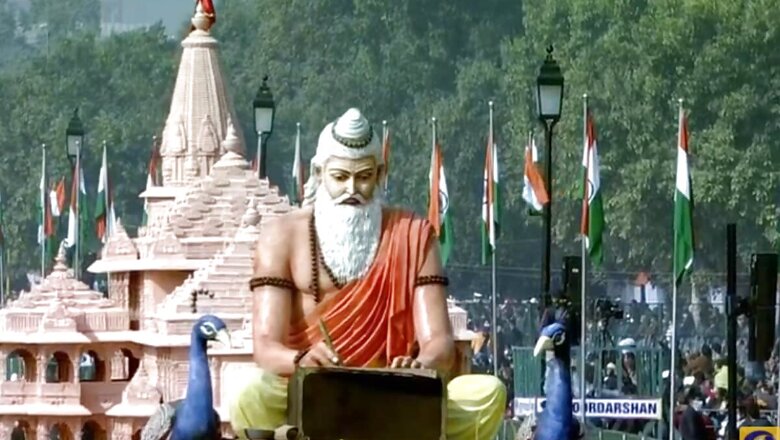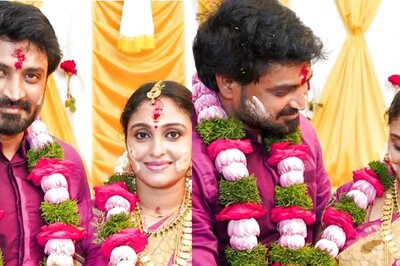
views
Almost five centuries of struggle for the construction of Sri Ram temple at Ayodhya is aimed at creating something that is manifestation of eternally inspirational Bharat’s civilisational values. Sri Ram’s life and deeds are pure manifestation of these values of rightfulness, truthfulness, and compassion. This is proved by the fact that Ramayana, which tells the story of Rama, has been one of the most translated texts with hundreds of local versions across languages and regions.
TH Griffith, who translated Valmiki’s Ramayana, ‘The Ramayan of Válmíki’(published in 1895) asks, “How could an epic so dear in India to the memory of the people, so deeply rooted for many centuries in the minds of all, so propagated and diffused through all the dialects and languages of those regions, which had become the source of many dramas, which are still represented in India, which is itself represented with such magnificence year after year and to such crowds of people in the neighbourhood of Ayodhya, a poem which at its very birth was welcomed with such fervour as the legend relates, that the recitation of it by the first wandering rhapsodists, has consecrated and made famous all the places visited by them, and where Rama made a longer or shorter stay, how I ask, could such an epic have been purely allegorical?”.
Every region in India knows about Sri Ram through their local versions of the ancient epic. There are innumerable archaeological and literary imprints which are testimony to the reverence for Sri Ram cutting across communities and languages. The earliest version is that of Sage Valmiki who is the contemporary of Sri Rama. As the story goes: Sita, the wife of Sri Ram gave birth to Lava and Kusa in the Ashrama of Valmiki. Valmiki’s ashrama was at a site in Bithoor which is 110 miles off Ayodhya, on the west bank of river Ganges.
Rajatarangani, a historical chronicle of the north-western Indian subcontinent kings of Kashmir, written in Sanskrit by Kashmiri historian Kalhana in the 12th century, mentions the tradition of Ramayana recitation existed in Kashmir even prior to the second century.
The spiritual aspect of Sri Ram and Ramayana was explored and written by Guru Govind Singh, the 10th Sikh guru in Ramavatar on the banks of Satluj .
In Gujarat, between the sixth and the mid-seventh century, Bhartrihari in Valabhi wrote Ravanavadha or Bhatti Kavya, depicting the life of Sri Ram upto his coronation. However, Ram’s life in Gujarati was first narrated in the 14th century.
Ramayana became popular in Tamil Nadu due to Alvar and Nayannar saints in the 7th and 8th centuries. It was Kulashekhara Alvar, who laid the foundation of Sri Ram’s worship in Tamilnadu .Uttarakanda of the Ramayana was widely known in Kamban’s Ramavataram in Tamil (c. 9th–12th century). This was the first adaptation in a language other than Sanskrit. Ramayana in Telugu and Malayalam and was an important source in taking this story of Sri Ram to southeast Asia.
Sri Ranganatha Ramayanamu, also known as Gona Budda Reddy, written between 1300 and 1310 A.D by Chakrapani Ranganath is one of the most famous adaptions of the Valmiki Ramayana in Telugu, a language spoken by the people of Andhra Pradesh and Telangana. In Malayalam, it was Ramacharitam besides Thunchaththu Ezhuthachan’s ‘Adhyathmaramayanam’.
There are several Jain versions of Ramayana composed in Tamil Nadu and Karnataka in medieval times. In Kannada language it was Pampa Ramayana or Ramchandracharit Purana by poet Nagachandra.
Madhava Kandali’s Saptakanda Ramayana is in Assamese (c. 14th century), Krittibas Ojha’s Krittivasi Ramayan also known as Shri Ram Panchali is written in Bengali (c. 15th century), Sarala Das’ Vilanka Ramayana and Balarama Dasa’s Dandi Ramayana also known as the Jagamohan Ramayana written in 16th century in Odia language .In Marathi it was Sant Eknath’s Bhavarth Ramayan (c. 16th century) who lived in Paithan, a great centre of learning and religion.Tulsidas’ Ramcharitamanas (c. 16th century) in Awadhi (which is an eastern form of Hindi)
An English Indologist Ralph Thomas Hotchkin Griffith, among the first Europeans to translate the Vedas into English said the Ramcharitmanas was more honoured than the bible is by the corresponding classes in England. G.A.Grierson writing about the literary magnificence says “the fact of its universal acceptance by all classes from Bhagalpur to Punjab and from the Himalaya to the Narmada , is surely worthy of note…to the vast majority of people of Hindustan ,learned and unlearned alike ,their sole norm of conduct is the so-called Tulsi-krit -Ramayan.”
Sri Ram’s character and life has been eulogized in other Indian Languages and dialects also which speaks of magnitude and the expanse of reverence for Sri Ram all over the nation. The influence of devotion for Ram’s life can be seen in all regional aspect throughout India. It will not be an exaggeration that over centuries it is the strength and purity of the character of Sri Ram inspired people. That makes Him a national icon of Bharat. Everywhere it is written in the same spirit as the original one written in Sanskrit by Sage Valmiki thousand years ago.
Ramayan’s influence is not restricted to one religion, one nation or one time. It has been a source of uniting Indian culture with South East Asian countries like Thailand, Cambodia, Indonesia, Laos, Myanmar, and Nepal. It is widely prevalent in culture of Singapore, Malaysia, and Vietnam.




















Comments
0 comment